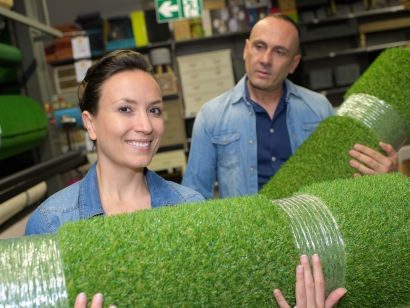
Embarking on the journey to select the best artificial grass for your garden or commercial space? Dive into our essential guide that unravels the six crucial steps to ensure your outdoor sanctuary not only captivates with its perennial green charm but also offers unmatched durability and eco-friendly benefits. From the intricacies of yarn quality to the art of choosing the perfect color palette, and the science behind selecting the ideal infill, our expert tips will transform your approach to synthetic turf. Discover how to tailor your choice to withstand the hustle and bustle of foot traffic, all while keeping maintenance at a minimum. Whether it's creating a serene backyard oasis or enhancing a commercial landscape, this guide is your first step towards achieving a lush, evergreen setting that beckons for attention.

There was a time when only people living in areas that suffer from drought considered artificial grass for its green touch. However, more of us started to realize that synthetic turf is not only useful in dry regions, but it also helps to save money, free our time, and conserve water. What's more?
Artificial turf is not subject to uneven patches or seasonal browning inherent in real grass. Up-greening your front or backyard guarantees the perfection of your exterior design. It helps to bind together the decor elements of your lawn, terrace, patio, or courtyard.
However, just picking any grass at random is not the way to go, and if you act on the extent of your budget alone, you might end up losing more money than you may expect. On that note, here are some tips you should keep to heart in your search for your perfect synthetic lawn.
Most of us presume that the best artificial grass costs more. It's true, but fortunately, what you need is not the most expensive turf, but the best product for you. This means the grass should be the solution to your unique environmental situation.
The yarn quality is the key. Everage synthetic turf is often sold at lower price points than synthetic grass designed for functional use; it is not manufactured to withstand the rigors of weather, sun, and foot traffic. Cheap synthetic yarn wears down faster, disintegrates from the backing earlier, loses its shape and color quickly. That alone makes a compelling case for investing in a professional-grade faux grass, which usually costs more than it's cheaper counterparts. Still, that doesn’t mean that pricier synthetic turf is always better.
It's very tempting to start shopping the darkest or brightest shades of green, but the best choices are usually subtler. Remember, you're trying to get the best of nature, so sticking to unnatural colors is not the best idea. Also, you might be better off with synthetic grass that combines different shades of green. Fake grass with intentional brown patches looks more natural than evenly-colored turf. All professional-grade synthetic turf has a combination of brown and green thatch.
Turf quality is essential, but without a well-installed base, your efforts and money will go down the drain. To be honest, you might need some professional advice here since the choice between gravel, sand, or chippings might add to your installation and upkeeping expenses.
Finding the right turf backing requires less insight. If you install turf on a base that endures heat, polyurethane backing works the best. It doesn't expand and lasts longer. Latex backing is a cheaper alternative to PE, but you'll sacrifice the durability and life span. Latex backing deteriorates in 8-10 years, while PE backing will last you for more than 20 years on average.
Traffic comes at a cost - the more expensive turf is, the more likely the design is a result of a lot of people doing a lot of research. Ask yourself - how much traffic you expect on your turf? Do you have kids, pets? Is it a private or public area? Are you planning to play sports on your turf? If you expect heavy traffic, you may want to stick to shorter blades or choose a taller "performance" yarn to avoid a flattening effect.
The recommended blade length for synthetic grass is about 30 - 35mm. Longer, un-structured blades have low resiliency and start looking dull and plain quickly. The density of the synthetic turf is another factor worth careful consideration because it affects the durability and the life span of the green. The total weight of turf is vital. Higher-quality synthetic grass always weighs more. If you can compensate for the low turf density with an increased amount of infill, the total weight isn't arguable. You don't want light-weight turf on the ground, but if you are installing faux grass on a rooftop or patio, make sure it can bear the load.
Ultimately, choosing the right turf is not as simple as selecting the highest grade of fake grass. At the end of the day, it comes to your environmental situation and visual preferences. Some are willing to pay a higher price for a particular feature, be it eye-catching colors or functionality. Synthetic grass is as individual as the homeowner designing the final look of their lawn; a newcomer should look up a variety of styles at a variety of price points, rather than simply assuming more money automatically equals a better artificial grass. So, don’t give yourself the green light to purchase one until you sort these points out.